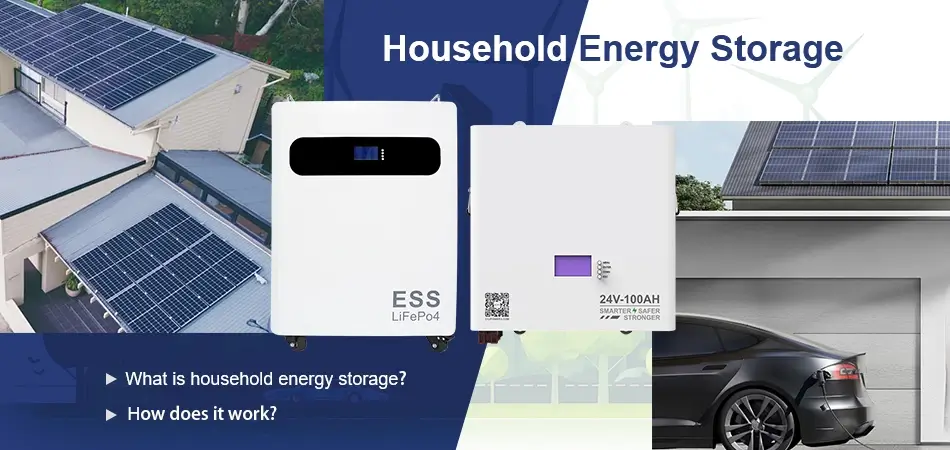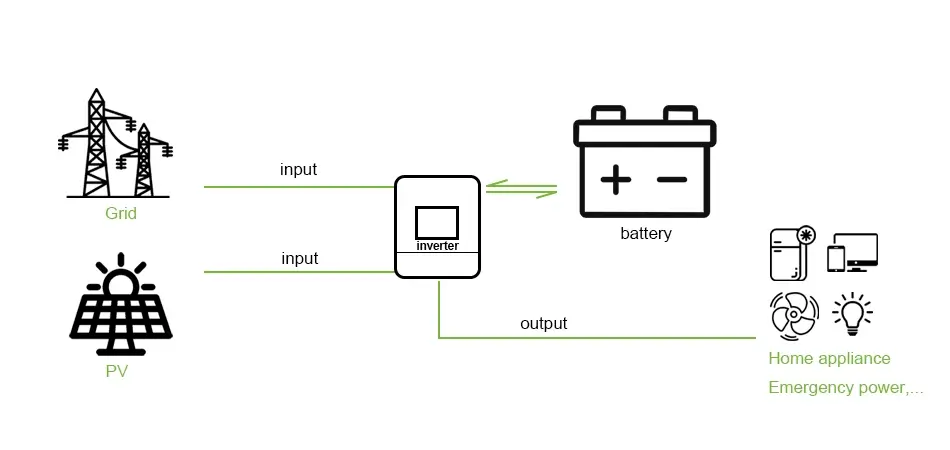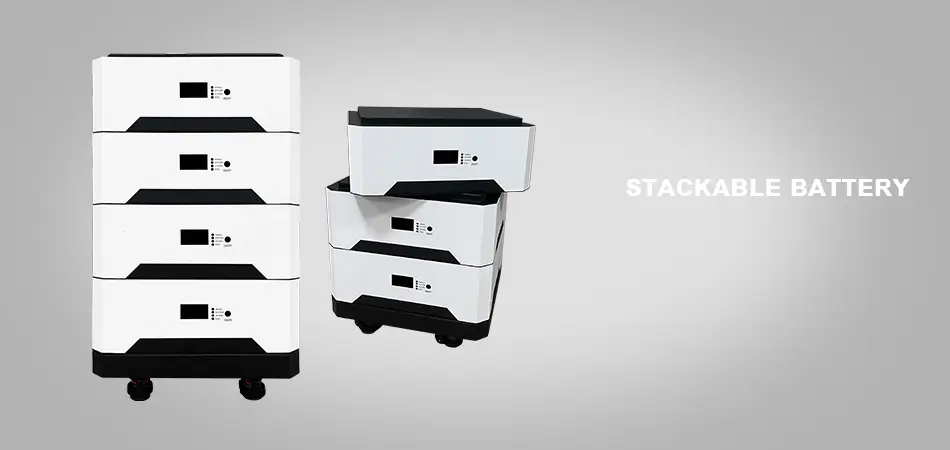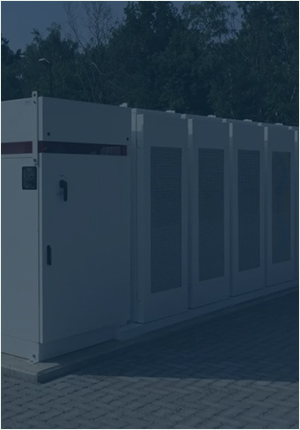2025-01-09 Author : CXJPowers
Household energy storage systems feature rechargeable batteries that enable you to preserve any excess electrical energy for future use. When integrated with the solar energy produced by your own photovoltaic setup, these batteries provide the capability to conserve the daytime-generated power, ensuring a continuous supply of electricity for your home, day and night. The advantage of household energy storage lies in its ability to enhance energy efficiency, reduce electricity bills, provide backup power during outages, and increase the utilization of renewable energy sources. It becomes increasingly popular due to technological advancements that have made batteries more efficient and affordable, coupled with a growing awareness of the environmental benefits and the desire for energy independence among homeowners.

Battery cell. The most of battery systems would adapt LiFePO4 battery cell. This type of battery is more ECO-friendly, safety and longer cycle life, which made it suitable for keeping for energy storage.
Battery rack. Comprising interconnected units that produce a DC current, and these can be configured across several racks.
Inverter. In an energy storage system (ESS), the inverter plays a critical role in converting the stored electrical energy into a form that can be used by various applications or fed back into the electrical grid.
Battery Management System (BMS). Battery Management System (BMS) in a battery is critical for ensuring the safe, reliable, and efficient operation of the battery. It can provides multiple protections to guarantee the health of battery, such as over-discharged protection, over-charged protection, over-temp protection, and so on.
Batteries can be added to an existing solar system. This process typically involves integrating the battery system with the existing photovoltaic setup, which may require professional installation to ensure compatibility and safety. By adding batteries, homeowners can maximize the benefit of their solar panels by using the stored energy during times when solar generation is not possible, such as at night or during inclement weather, thus reducing reliance on the grid and potentially lowering energy bills.

The amount of energy a home battery energy storage system (BESS) can store varies greatly depending on the type and size of the battery. Here are some typical storage capacities for residential battery systems:
1.Lead-Acid Batteries: These are the most traditional type of battery used in home energy storage systems and typically have capacities ranging from 100 to 2,000 ampere-hours (Ah). To calculate the energy storage capacity in watt-hours (Wh), you would multiply the Ah rating by the battery voltage (usually 12V or 24V for home systems). For example, a 200 Ah battery at 12V would provide 2,400Wh or 2.4 kWh of storage.
2.Lithium-ion Batteries: These are more advanced and are becoming the standard for home energy storage due to their higher energy density, longer lifespans, and lower weight. Home lithium-ion battery systems typically range from 5 kWh to 20 kWh, with some high-end systems offering even more storage. For instance, a 10 kWh lithium-ion battery can store 10,000Wh of energy.
It's important to note that not all of the battery's capacity may be usable due to factors like battery chemistry, depth of discharge (DoD) limits, and efficiency losses during charge and discharge cycles. For example, if a battery is specified with a 90% DoD, then a 10 kWh battery would effectively provide 9 kWh of usable energy.
When considering a home battery energy storage it's also important to think about the inverter capacity, which determines how quickly energy can be drawn from or fed into the battery, as well as the overall system design to ensure that it meets your specific energy needs.
You can purchase the corresponding battery capacity according to your actual usage needs. When considering, some families will choose to ensure the normal operation of important home appliances only during short-term power failures, such as refrigerators, heating equipment, WIFI, etc., to ensure normal life. Then a storage system with a capacity of about 10kwh is enough to power these devices for a short period of 10-12 hours. Of course, the specific data needs to be calculated based on the specific power of the home appliance and the required supply time. The calculation formula is: power consumption (kwh) = appliance power (kw) × usage time (hour).
There are many styles of storage systems, including stackable ones, which can increase or decrease the number of battery modules according to their needs. For example, CX-SP001, the capacity of each battery module is 5kwh, which can be stacked to 2kwh, and can be connected in parallel.

Household energy storage systems (HESS) can not only store solar energy to provide backup power during power outages, but also have many other functions and benefits. There are several other uses and benefits of HESS:
Grid Support: HESS can provide services to the grid, such as frequency regulation, peak shaving, and voltage support, which can help stabilize the grid.
Energy Independence: By storing their own generated energy, homeowners can reduce their dependence on the grid and have more control over their energy supply. For remote or off-grid locations, HESS can be a critical component of an independent energy system, providing a reliable power supply.
Smart Home Integration: HESS can be integrated with smart home systems to optimize energy use, automate energy management, and improve overall home efficiency.
Energy Arbitrage: HESS can take advantage of the price differentials between buying and selling electricity to make a profit by buying when prices are low and selling when prices are high.
Renewable Energy Integration: HESS helps to integrate intermittent renewable energy sources into the grid by storing excess energy and releasing it when needed.
Community Energy Sharing: In some cases, HESS can be part of a community energy system where stored energy is shared among neighbors or used for community facilities.
Emergency Response: During natural disasters or emergencies, HESS can be used to provide power for critical services such as communication, lighting, and medical equipment.
These uses can vary depending on the specific configuration of the HESS, local regulations, and the needs of the household or community.

Most energy storage systems use lithium batteries, which generally have a long life and high safety. When integrated with BMS, safety can be guaranteed to a greater extent.Here are some considerations for safety and maintenance:
Certification: Ensure that the energy storage system is certified by recognized safety standards organizations, such as UL (Underwriters Laboratories) in the United States.
Professional Installation: Have the system installed by a licensed electrician or a professional installer who is experienced with energy storage systems.
Ventilation: Install the system in a well-ventilated area to prevent the buildup of gases that may be emitted by the batteries.
Temperature Control: Maintain an appropriate temperature range as specified by the manufacturer to prevent overheating, which can lead to reduced battery life or, in extreme cases, fire.
Fire Safety: Keep fire extinguishers suitable for electrical fires nearby and make sure that everyone in the household knows how to use them.
Surge Protection: Install surge protectors to safeguard the system from power spikes that could damage the batteries.
Insurance: Check with your insurance provider to ensure that your household insurance covers the energy storage system.
Monitoring: Regularly monitor the system's performance using the provided monitoring tools or software to ensure it is operating within safe parameters.
Cleaning: Clean the system's exterior and connections as recommended by the manufacturer to prevent dust buildup and ensure proper operation.
Inspection: Periodically inspect the system for any signs of damage, such as, corrosion, leaks, or loose connections, and address any issues promptly.
Battery Life: Be aware of the expected lifespan of the batteries and plan for replacement when necessary.
Software Updates: Keep the system's software up to date to ensure you have the latest safety features and performance improvements.
Professional Maintenance: Some systems may require periodic professional maintenance. Follow the manufacturer's recommendations for service intervals.
Always follow the manufacturer's guidelines and local regulations regarding the installation and maintenance of a household energy storage system. If you're unsure about any aspect of its operation, consult with a professional.
Energy storage batteries have become one of the choices for most people to ensure power supply, and this will become a major trend in the future. If you are also interested in investing in installation, you can contact CXJPowers. We provide Grade-A battery systems, which are safe and reliable, and have a variety of styles to choose from, and support customization to meet your needs!
------------------
Welcome to customize household energy storage system. Contact us now!
CXJPowers provides one-stop customized portable power supplies, LiFePO4/ternary lithium battery pack packs, emergency energy storage solutions, and supports OEM&ODM services.



